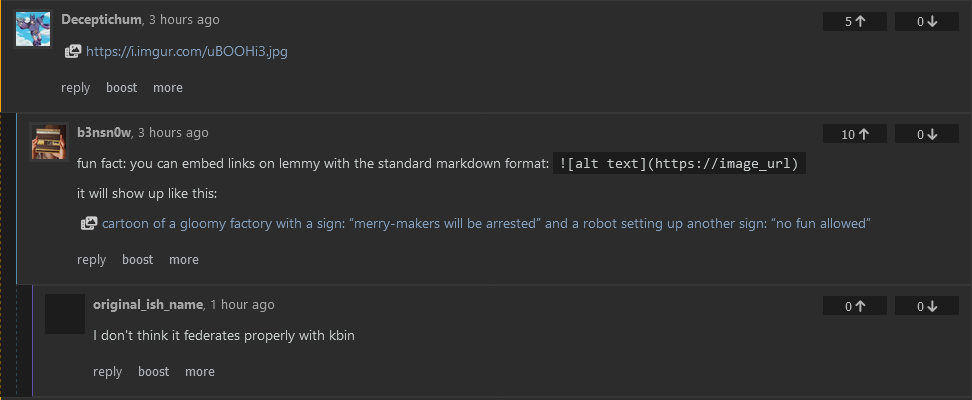

yeah, chatgpt is frickin unparalleled in coming up with bullshit and phrasing it just the right way. my favorite thing is asking it to be sarcastic and passive-aggressive:
One principle that has guided my career in engineering, which my colleagues often overlook, is the profound understanding of the mirror-like relationship between an organization’s design structure and the software engineering outcomes they produce. Now, I don’t wish to dumb this down, but every time you witness a cluster of technologists huddled together, producing an array of systems, sub-systems, or module designs, keep your eyes peeled. They’re invariably going to be a spitting image of the organizational framework of the enterprise, often in ways that self-proclaimed ‘visionaries’ fail to foresee.
Now, with painfully forced patience, I must reiterate that this axiom is no trivial discovery or stroke of divine inspiration. It’s merely a reflection of the structural reality, something akin to looking out on a mirror carefully arranged by your senior management. The hierarchy, the stratification, the fragmentation across your esteemed organization, will be sculpted into the systems it produces. Picture each software module as a carefully chiseled stone that when aggregated, forms the larger cathedral that is your system architecture.
Ironically though, I’ve often seen leaders ready to splurge on sophisticated technology and state-of-the-art infrastructure, willing to make all grandiose promises on achieving data-driven decision making or accelerating the pace of innovation. Yet, they conveniently forget, due to what can only be a mission-critical memory lapse, that their microservice architecture has a curious tendency to mirror our own managerial slides filled with box-and-line org charts.
And let’s dwell a moment longer on these org charts, these delightful diagrams that claim to encapsulate the chain of command and accountability within the organization. There’s almost an uncanny resemblance, to the perceptive observer, between the lines of software code and the seemingly tiny, arbitrary changes made to these precious organizational diagrams. Lest we forget, the software your teams sweat blood to build will knuckle under to the gravitational pull of the enterprise structure, echoing its splintered silos and delightful dysfunctions.
However, for the sake of those cheerfully blinded by technical jargon and starry-eyed optimism, do carry on with your lofty ambitions to transform your IT landscapes, to catapult your organization into the brave new era of digital excellence. Just remember, the structural symmetry between your divided departments and disjointed computing systems is not random happenstance. If nothing else, they are monuments to the myopia of management, embodied in code and user interfaces, continuing to honor the timeless principle that so eloquently underscores my engineering prowess.
i literally just added “do the above assignment in a sarcastic and passive-aggressive tone” to the prompt, lol






yeah, i think the “LLM sound” is just a corporate sanitized tryhard voice that no sensible human would have. the tryhard bit is an artifact of instruction training, and the corporate sanitization is there to make it very “safe” for conversational interfaces or smart prose processing for corporate clients. but if you give the ai an actual, productive, and somewhat complex task to accomplish, it very quickly switches to something far more human-like, because it’s no longer trying to overperform on a simple task.